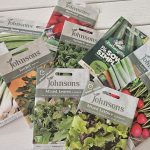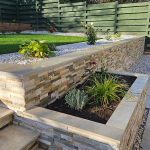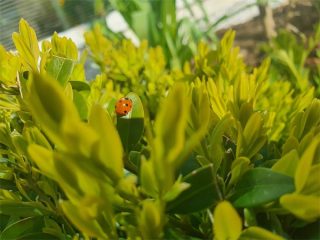A Sustainable Future
Saturday, 27 November 2010
It’s a common misconception that sustainability and being kind to the environment equates to being unkind on the wallet. Here are some ideas of how you can create a stunning sustainable garden whilst still doing your bit to help the planet and without breaking the bank…
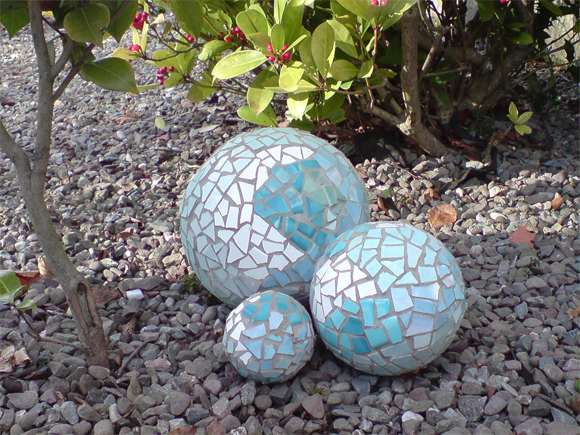
A mosaic ball is fun to create and reduces landfill
RECYCLE
Re-use all sorts of otherwise useless objects in the garden to create interesting features. Old bamboo canes, broken pots, egg cartons and old bricks can all be used to create a trendy wildlife tower. Or try using old slates stacked on their ends to create an interesting feature. Old concrete slabs are commonly lifted to be replaced by something more modern. However, they can be broken and re-laid to be a modern take on crazy paving. Or, if you are feeling like trying your hand at some crafts, how about making a mosaic ball out of left over tiles for a unique garden ornament.
FREECYCLE

Freecycle is a wonderful organisation
SHARE THE LOAD
Seed sharing is a great way to get free plants. Often a pack of seeds gives you far too many of the one plant. Swap some seeds with like-minded gardeners to widen your plant choice. Alternatively, you might have sown all your seeds but have too many plants for your own garden and have excess you are happy to give to a good home. Or perhaps you have excess fruit and veg you can’t get through yourself? There are some great websites that you can swap through or perhaps, if there is demand, we can create something locally. Let us know if you are interested.
SALVAGE YOUR GARDEN
There are salvage yards which are dedicated to supplying “scrap” for garden use. From sculptures and fountains to furniture and planters there are plenty of items which will make your garden completely unique and you will be saving it from landfill. If are looking for something a bit more unusual, look at non-garden salvage items and consider how it could be adapted to some use in your own garden such as an old wheel as part of a handrail.
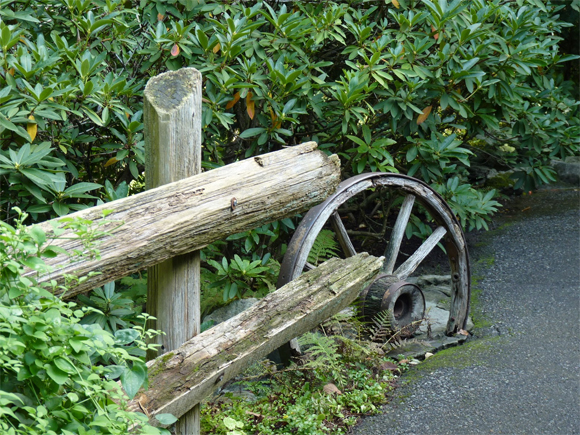
This upcycled wheel makes a great handrail in a garden in Canada
SOURCE FREEBIES
If you are about to embark on a garden project, before you head to your local DIY superstore consider alternative ways you can source the required materials. Local builders and landscapers often have left over materials they don’t need or scrap they have removed from a job which is destined for the local tip. Contact them to see if they have materials which suit your needs – what might have been someone’s deck in a previous life might become the frame for your new green roof.
CIRCLE OF LIFE
Re-use items from your own garden to create interesting new features. For instance, an old felled apple tree could be cut up into sections to create a contemporary wildlife log feature in a quiet, unused corner of the garden. By tempting wildlife into your garden, they will help you deal with the various pests in your garden in a non-biological way.
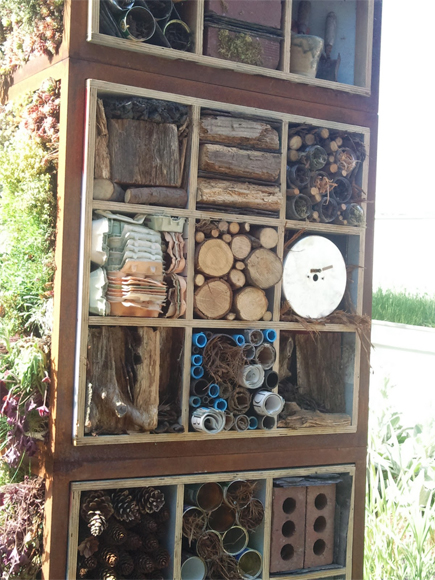
A trendy wildlife tower is a great way to recycle materials
HARD CHOICES
Consider your choice of hard landscaping carefully before you commit. Not only can paving be very expensive, many varieties are non-permeable, thus impacting on water levels in the area. And we all know how prevalent flooding has been recently! Consider alternatives such as gravel which is cheaper and allows excess water to permeate more easily.
SEED OF THOUGHT
If you have the time and patience, grow plants from seeds. Not only does it save money (especially if you have got them free as discussed earlier) but you avoid additional costs to the planet by avoiding the plastic pots which plants are sold in in garden centres. You are also avoiding transport costs of the plants from nursery to wholesaler, wholesaler to retailer then retailer to consumer. And of course there is the immense satisfaction of growing your own plants from tiny seeds. Priceless.
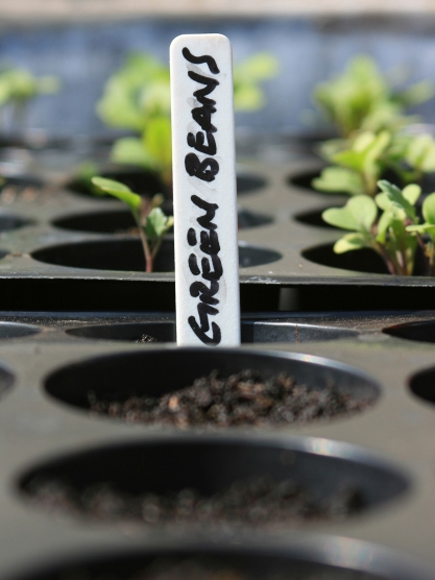
Growing plants from seed is immensely satisying
GO ORGANIC
The word “organic” can strike fear into the hearts of many a shopper as it can often seem an excuse to charge the customer more. However, when it comes to gardening, it can be a cheaper approach to horticulture, whilst doing your bit for the environment. For a start you won’t be buying any of those expensive chemicals to kill pests or keep them off your prize plants. Clever approaches such as companion planting is cheaper, can look pretty and keeps your conscience guilt free. Attracting wildlife into your garden, using some of the tips above, helps deal with the pests too. And simple old hard graft is the cheapest, most effective and kindest way to deal with your weeds (and great for calorie burning too!).
So now you can sleep well at night knowing you’re doing your bit for both your bank balance and the planet.
All at Vialii
